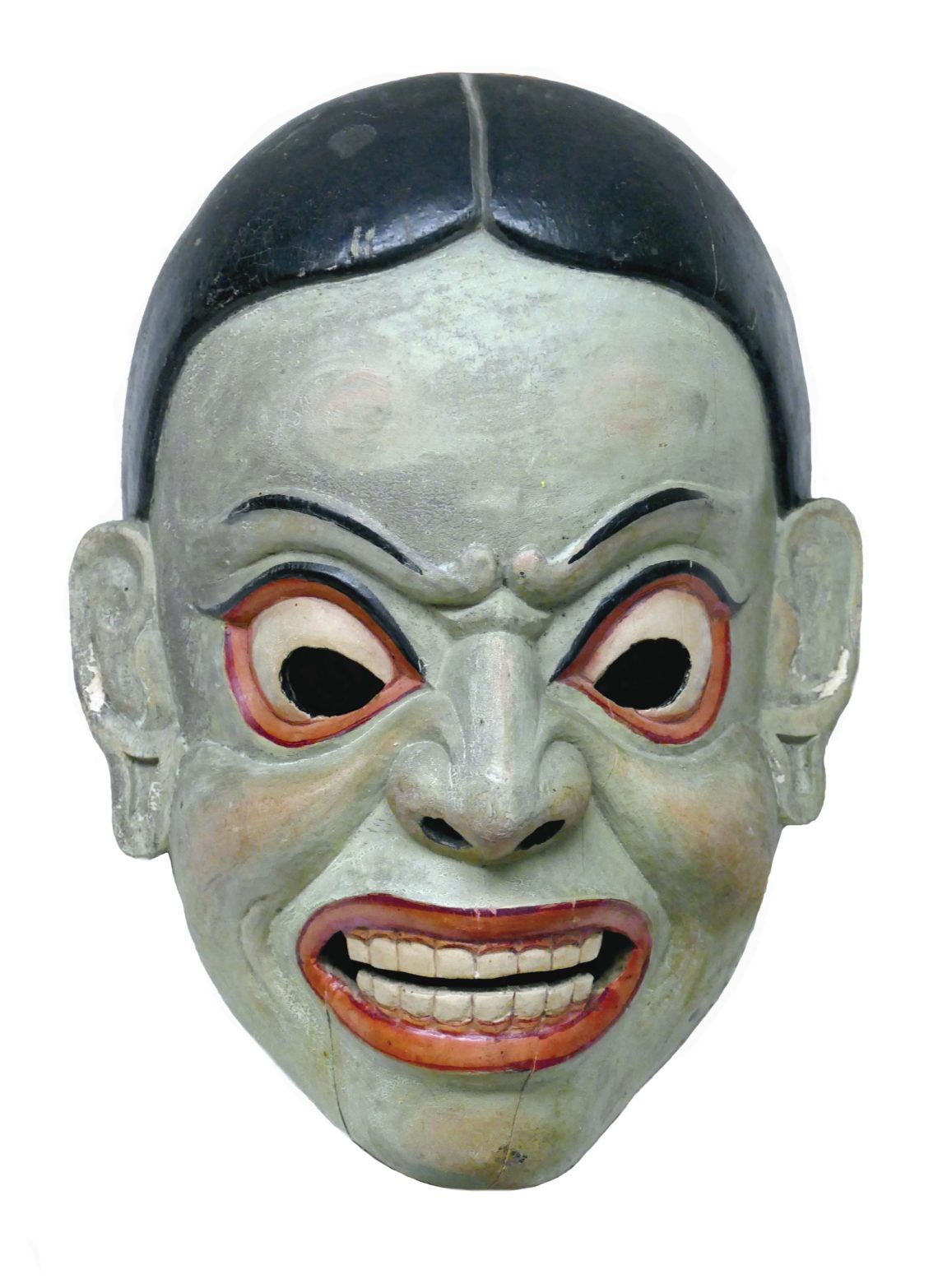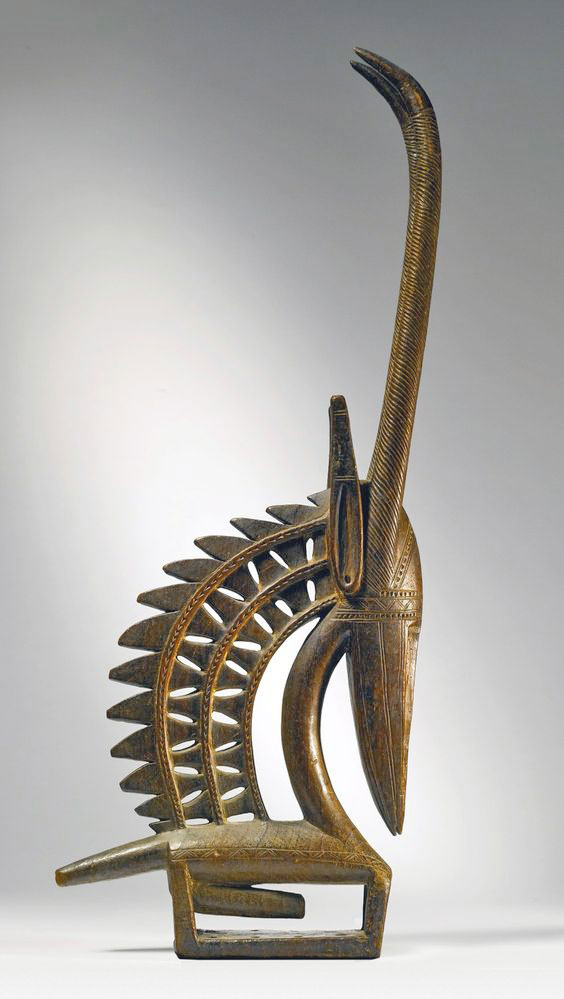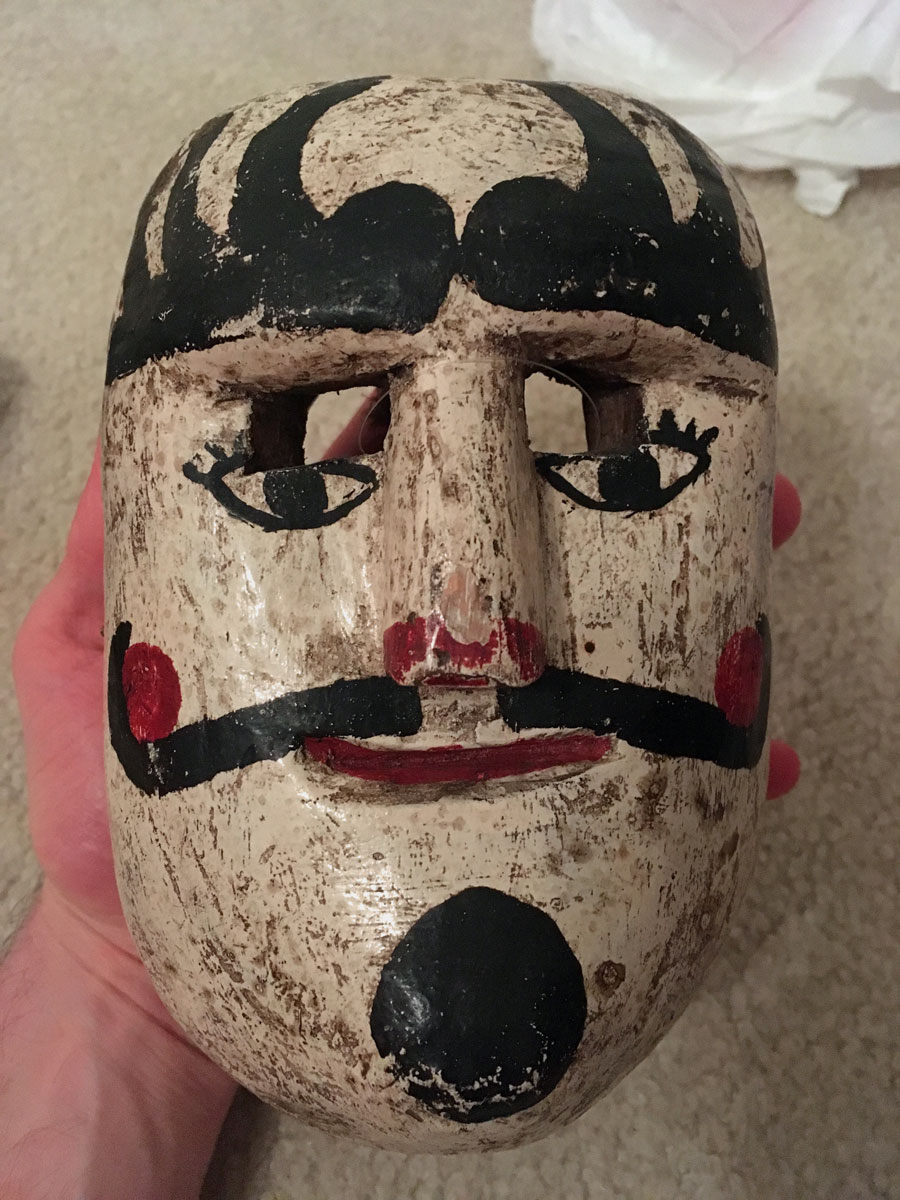 Q: Slightly Mysterious… I recently purchased this mask at an online auction for approx $30. Not sure of origin since it was simply described as an “Asian Mask”. I don’t believe it was ever worn, but it’s very well made and certainly could have been . It measures 11″ X 9″ and carved from a lightweight wood. I’m guessing it’s from Bhutan or Nepal, based on the way the ears are carved and the exaggerated expression, but I could be wrong. Dan, 1622
Q: Slightly Mysterious… I recently purchased this mask at an online auction for approx $30. Not sure of origin since it was simply described as an “Asian Mask”. I don’t believe it was ever worn, but it’s very well made and certainly could have been . It measures 11″ X 9″ and carved from a lightweight wood. I’m guessing it’s from Bhutan or Nepal, based on the way the ears are carved and the exaggerated expression, but I could be wrong. Dan, 1622
A: I think of traditional Buddhist masks as being Himalayan, but they are also found as far north as Mongolia for use in the famous Tsam ceremony held at the beginning of the year. It consists of a series of masked dances and often has a narrative content. I believe there are over 100 different characters in these dances.
Tsam (in Tibetan, Cham) means masked dance, and local variations of the festival were once practiced in Tibet, Ladakh, Nepal, Sikkim, Bhutan, China and Mongolia, but only in Ladakh and Bhutan and at a few remote, inaccessible monasteries has it been protected from destructive politics and the impact of Western civilization. In Tibet, Mongolia, Transbaikalia, and China the festival either fell victim to the ruthless Stalinist suppression of Buddhism in the 1930s, or more recently to the vandalism unleashed by the Chinese Cultural Revolution of Mao Zedong.
Today in Mongolia efforts are being made to revive the tradition, with elderly monks who survived persecution teaching young monks the rituals and choreography of Tsam. Dan’s mask would have been made by one of these monks. A







One Comment
Dan
Based on some additional research, I believe this may be a clown mask from the Sikkim region of Northeast India, which is bordered by Bhutan, Tibet and Nepal.